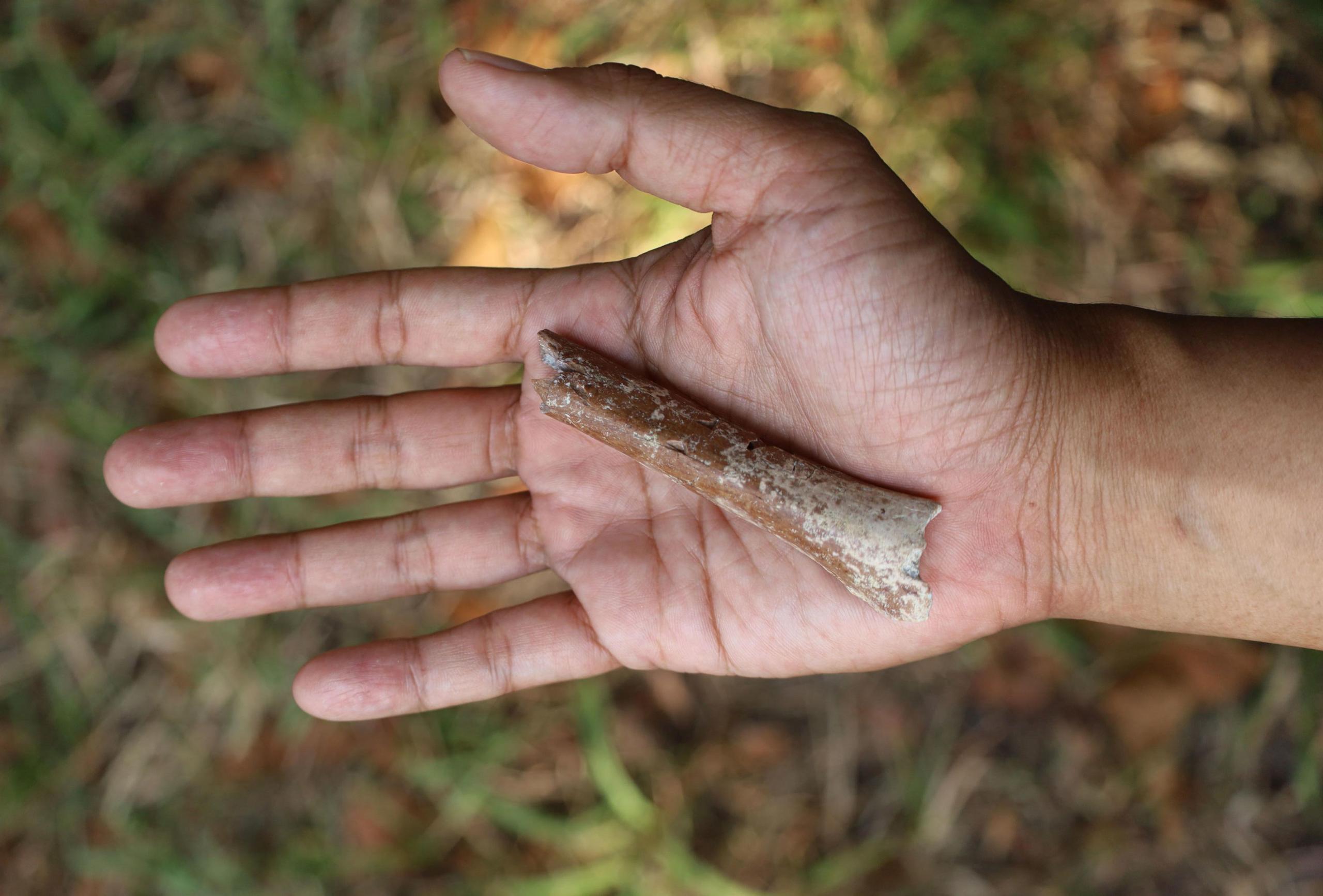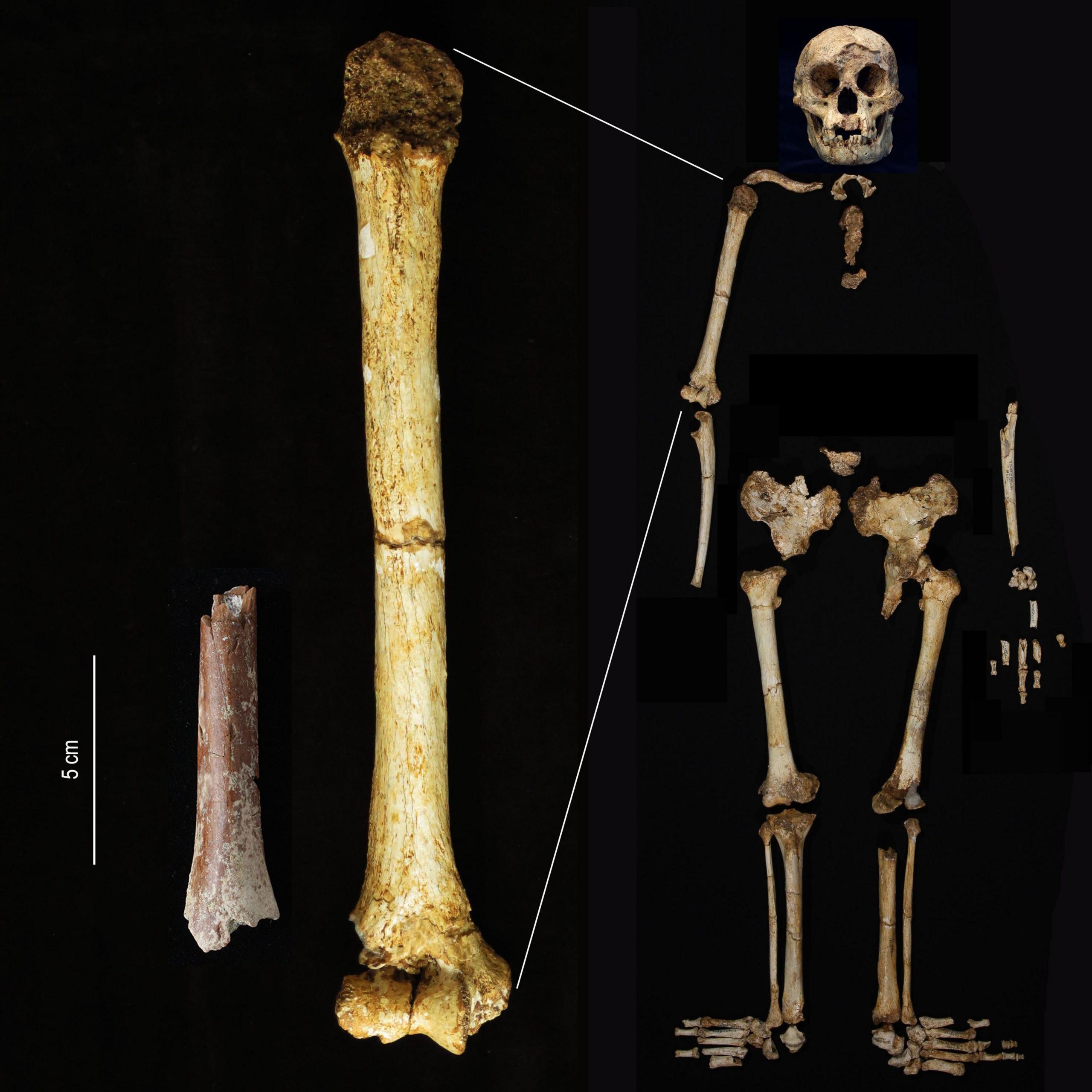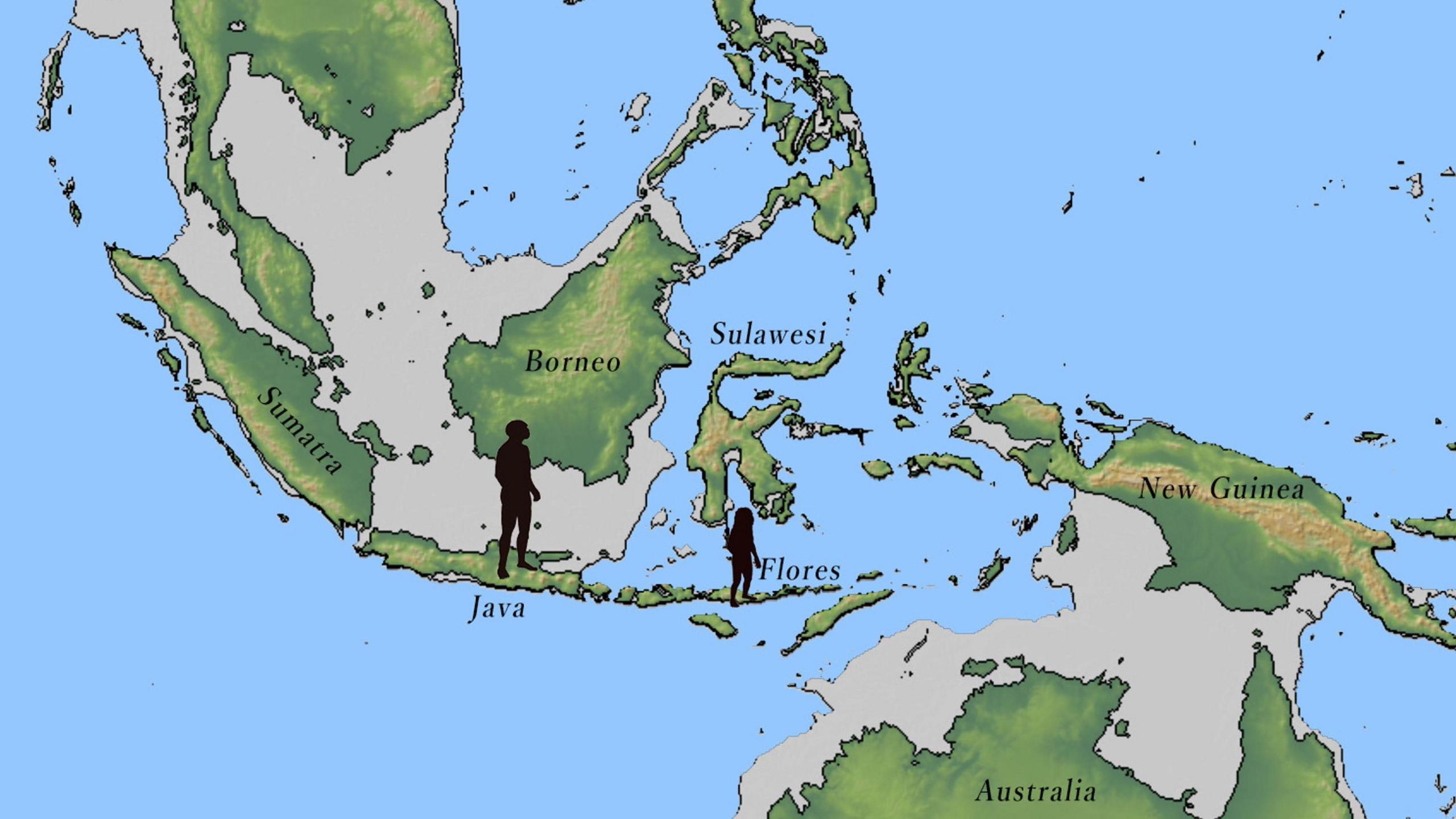Ancient bones of the world's tiniest 'hobbit' humans discovered

This fossilised arm bone helped scientists to work out the height of an ancient, tiny species of human from 700,000 years ago.
- Published
The fossilised bones of one of the smallest species of ancient human on the planet have been discovered on the Indonesian island of Flores.
The bones were discovered by scientists in an area called Mata Menge, and are thought to be around 700,000-years-old.
Since 2016 they have uncovered part of a skull, a piece of jawbone, teeth, and part of an upper arm bone, or humerus.
With this new piece of arm bone, the scientists say they have finally been able to work out that the tiny humans would have measured around one metre in height.
Who were the 'hobbit' humans?

In 2003 the fossilised bones of a species of human called Homo floresiensis were discovered in the Liang Bua cave on Indonesia’s island of Flores by a team of Australian and Indonesian researchers.
They were nicknamed 'hobbits' - after the species of small humanoids from the Lord of the Rings series by JRR Tolkein.
This is because, from studying the bones, scientists were able to work out the adults would have measured around 106 cm tall - that's about as tall as a four-year-old modern-day child.
They were also able to work out that these small humans would have lived around 50,000 - 90,000 years ago.
Fast forward to 2016 and Yousuke Kaifu from the University of Tokyo and his colleagues discovered the fossilised remains of more ancient humans, 75km away from Liang Bua cave, in Mata Menge.
Except these human bones were around 700,000 years old, and were even smaller than those of Homo floresiensis.
Why were they so small?

This map shows where fossils of Homo Erectus (left), and the Mata Menge fossils (right) were discovered.
Scientists studying the ancient hobbit-humans have come up with many theories for where they came from and why they were so small.
Some researchers think the fossils found in Mata Menge are the ancestors of the Homo floresiensis people, whilst others think that they are a new species entirely.
Yousuke Kaifu and his team think that maybe these tiny ancient humans evolved from an older and taller species of human called Homo erectus, which are the first human species known to have lived outside Africa around a million-years-ago.
“I’m almost sure that they are derived from those populations,” says Kaifu, based on the similarities in their teeth, the time they would have lived in and the locations their fossils were found in.
This idea suggests that the ancient humans shrank in height over the period of 300,000 years living on the island of Flores.
“They were small early and then they remained small for a long, long time,” he says.

The Mata Menge excavation site in Flores, Indonesia.
Animals changing size through evolution is something that scientists have noted in the past.
On islands animals have been known to become smaller in size, because there is less food available, and there aren't really any large predators, which means there’s no advantage to being bigger.
Flores was also home to dwarf elephants and other species that had shrunk over many generations.
However, other scientists, like Debbie Argue and her colleagues at the Australian National University in Canberra, think that their closest known relatives weren’t Homo erectus, but instead an older species called Homo habilis, which is only known from Africa.
Most scientists agree that more fossils and research is needed to answer the question of the hobbits’ origins properly.
